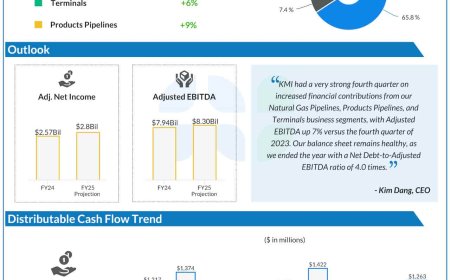Pets for Performance: How Can Firms Benefit from Office Animals?
The animal lovers among us wake up bright and enthusiastic on “Bring Your Pets to Work” day. The thought of having your loving and comforting pet by your side all day makes everything seem less stressful. Even the client presentation scheduled for the afternoon does not seem as unnerving. After all, your pet will be […] The post Pets for Performance: How Can Firms Benefit from Office Animals? appeared first on Insights Success.

The animal lovers among us wake up bright and enthusiastic on “Bring Your Pets to Work” day. The thought of having your loving and comforting pet by your side all day makes everything seem less stressful. Even the client presentation scheduled for the afternoon does not seem as unnerving. After all, your pet will be there to lick your anxieties away.
In what can only be described as a paw-some business trend, more modern workplaces are considering allowing office companion animals.
How Do Office Pets Improve Productivity?
Recently, some Australian workplaces tried the idea in partnership with CANA or Companion Animal Network Australia. The employees reported that working alongside animal friends made things calming and enjoyable. It also gave fresh recruits a chance to talk to new people. Few can resist the charm and innocence of cuddles and licks, particularly on tough days.
In a diverse workplace, some employees may require the assistance of guide animals. For example, workers with vision issues can benefit from a guide dog. Similarly, service dogs can help employees with conditions like Down’s Syndrome.
This unique strategy can be helpful for businesses where employees are subject to daily stress and frustrations. Sectors like finance, mental health counseling, and healthcare may experience the most benefit. Implementing such a policy will require planning and foresight.
Prioritizing Health and Cleanliness
Routine office cleaning may be inadequate for implementing a pet-friendly workplace policy. Pets like dogs and cats can shed masses of hair every day. Some employees may be allergic to these animals, leading to problems like nasal congestion and skin irritation.
Tackling pet waste is another challenge, particularly as some pets may not be toilet-trained yet. Making the corresponding employee accountable for scooping and disposal is a straightforward approach. However, they might miss certain areas if their workday has been busy (and the pet has been busy also!).
As a business owner, you can consider pet waste sanitization to keep the office deeply cleaned and germ-free. Booking a professional service will keep the property hygienic. It will assure the employees that you understand their health and wellness needs.
Scoop Soldiers notes that deodorization or removing foul smell alone will not eliminate the risk of bacteria and viruses from waste material. Only sanitization will get rid of pathogens like Feline Herpesvirus or Canine Parvovirus. Businesses must ensure the sanitizing process uses pet-friendly and eco-friendly materials.
Good Boys and Girls Only: Assessing Pet Behavior
For a pet-friendly workplace policy to be successful, business leaders must take steps to ensure the safety and comfort of employees.
While your pets may behave perfectly at home, they may be uncomfortable or hostile in a crowded public environment. Unruly behavior from pets can become a hindrance to employee productivity. It can also cause accidents and injuries.
A simple way to tackle this is to conduct honest discussions with employees who wish to bring office companions. They must own responsibility for their pet’s behavior as they will understand it best. For example, some dog breeds, like Labradors, are generally friendly. However, others, like American Bulldogs, may be too apprehensive of strangers.
The policy should include acceptable behaviors and interactions with the pets. For example, some cats may not like strangers to pet them and may gnarl in response. Also, you don’t want the cuteness to eat into precious person hours! Keeping an allocated space for playtime can be optimal.
Inclusivity in Pet Policies for the Workplace
Akin to inclusivity among employees, business leaders will require a similar approach for pets that spend time in the workplace. For instance, cats and dogs are unlikely to trigger resistance among non-pet owners. However, many employees may object to unusual pets like spiders.
While drafting the policy, assess your staff’s pet ownership. Accordingly, you can list the allowed pets for certain days of the week. It can help to make a roster so that only a specific number of pets are in the office on one day. The policy must also detail pets not permitted on the premises, like rabbits or hamsters.
Businesses are competing for an edge in innovation and technology. At this time, emphasizing human values of affection and companionship can give your company an edge. Employees who use pet-sitting services may also derive a financial benefit from this policy.
Besides improving the morale of the current staff, it can also become a talking point during recruitment. New Empower Research found that spending more time with pets is a valuable work priority for Gen Z. Around 31% of Gen Zers prioritize time with four-legged comrades over higher pay. About 41% are comfortable returning to the office if their pet can accompany them.
With rates of pet ownership increasing globally, allowing animals to join their humans at work makes logical sense. A policy like this does not help only the humans involved but also the animals. They can say goodbye to long days spent alone at home, waiting for their owners to return. Instead, they can feel valued by offering the gift of their company and affection. It is a two-way street.
The post Pets for Performance: How Can Firms Benefit from Office Animals? appeared first on Insights Success.










































